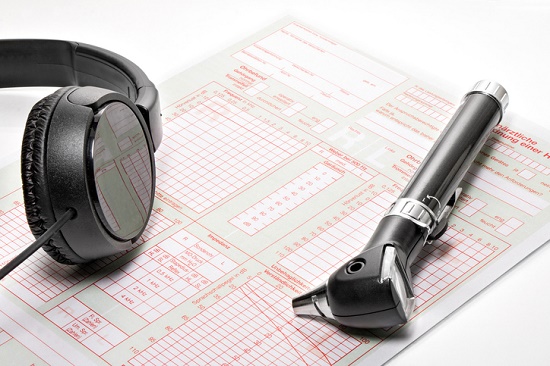
The hearing test honestly is the easy part. The challenging part is accepting your hearing loss and actually reserving the hearing test in the first place.
You’ve probably read the stats by now: 48 million individuals in the United States suffer from hearing loss but only a minor fraction actually do anything about it, and only 20 percent of people who would benefit from hearing aids actually utilize them.
So if you’ve already scheduled your hearing test, congrats, you’ve already overcome the largest impediment to healthier hearing.
The hearing exam, as you’ll witness, is an easy, non-invasive process that will identify the degree of your hearing loss to help develop the most appropriate method of treatment.
After you initially arrive at the office, you’ll begin by submitting some paperwork. Then, you’ll consult with your hearing care provider to review your hearing health history.
Your Hearing Health History
Your hearing loss, if existing, can be due to exposure to loud noise, the normal aging process, or by an underlying ailment. You’ll want to exclude any underlying medical conditions prior to proceeding to the actual hearing test.
If you have an earwax impaction, for instance, you could be hearing better within a few minutes shortly after a professional cleaning. The existence of any other ailments will be examined and the applicable referral made, if necessary.
After examining your basic medical history, you’ll discuss your subjection to loud sounds, your hearing loss symptoms, and exactly what you would like to achieve with better hearing.
It’s vital to determine potential causes, how symptoms are having an effect on your life, and how better hearing will improve your life, which is in the end the whole point. Be leery of the practitioner that doesn’t appear to care about the reasons why you want to enhance your hearing in the first place.
The Hearing Test
There’s one more step to take before beginning the hearing test: the visual evaluation of the ear with an instrument called an otoscope. This will help rule out any problems with the ear canal, the eardrum, or the surplus buildup of earwax.
Next, you’ll be escorted to a sound-treated room with your hearing care professional. You’ll be required to wear headphones, and the specialist will begin to play you some sounds.
You will be presented with different sounds at assorted frequencies, and you’ll be asked to identify the quietest sounds you can hear at each frequency. This is labeled your hearing threshold, and the hearing care provider will log these values on a graph called an audiogram.
The hearing test might also entail speech testing, where you’ll be instructed to repeat the words presented to you. Assorted types of words, presented at various volumes with and without background noise, will be introduced. This will help establish if hearing aids can help you with speech understanding.
At the conclusion of the testing, your hearing care provider will go over the results with you.
Assessing Your Hearing Test Results
Referring to your audiogram, your hearing care professional will now review your hearing in both ears. Based upon the results, your hearing will be classified as normal or as exhibiting mild, moderate, severe, or profound hearing loss.
If a hearing loss is found, the next move is discussing your treatment options. Given that there are no present medical or surgical treatments to restore hearing damage, this means examining your hearing aid options.
Today’s hearing aids come in a vast array of shapes, sizes, and colors, at different price ranges with several sophisticated features. In choosing your hearing aids, it’s crucial to work with a competent hearing care professional for three main reasons:
- They can help you find the ideal hearing aid model to meet all of your objectives.
- They can help you identify the advanced functions you need—along with the ones you don’t—at a price tag that suits your budget.
- They can program your new hearing aids to enhance only the sounds you have trouble hearing—ascertained by the hearing test—ensuring optimal sound quality.
And that’s it, a fast, easy procedure in return for a lifetime of healthier hearing. We’d say that’s a very good deal.
We look forward to seeing you!
